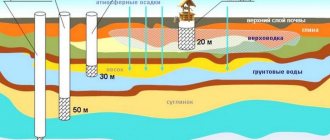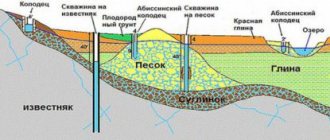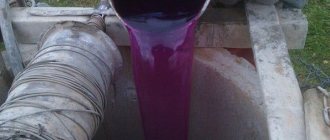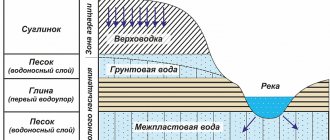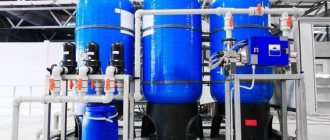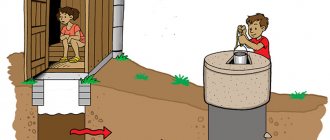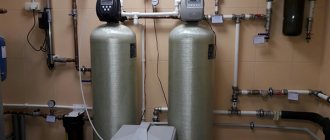In individual water supply, the main method of obtaining water is lifting it from wells of various depths, and it is often necessary to solve problems associated with its contamination by metal oxides. Iron is most often found in water, which has a negative impact on both health and plumbing and water heating equipment in the house, so deironization of water from a well is an urgent task for many homeowners of autonomous water supply systems.
Well water can have various iron impurities and their concentrations; the type of water treatment technologies used depends on its composition. A consumer who encounters contaminated water is required to have it chemically analyzed in a laboratory, and then, based on the data obtained, decide how to remove iron from the well water.
Rice. 1 Household equipment for iron removal
Why should water be deferrized?
Although iron is one of the minerals necessary for the human body, its excess in water can lead to very serious illnesses. Dermatitis and allergies, the risk of malignant tumors, urolithiasis and intestinal diseases - these, and many other diseases, can arise only because there is too much iron in the water!
In addition, water supersaturated with iron has a detrimental effect on plumbing and water heating devices.
Of course, such a prospect will not make anyone happy. And the problem of purifying water from iron worries everyone!
Background
More than 25 years ago, when our parents received the plot, in the spring everything here was flooded “ankle-deep.” Then in the summer everything dried out, but the garden houses were still built on a high base, or rather on the technical floor (typical two-story houses with a warehouse-garage below and living space above).
Country house on a high base
This happened because the site was located in the floodplain of the river on water meadows (one might say, a swampy place, but in a forest). It is natural and understandable that the groundwater was very close to the surface : in summer the water level was at a depth of 2-3 meters in quicksand.
Well on quicksand - three rings are visible
At that time , due to inexperience, a well was made , which constantly silted up and had to be cleaned every year. The water there was dirty - only for irrigation.
True, the neighbor’s well was made a little better. He cleaned it less often - only once every two years. The water there was cleaner, and the neighbor even drank it, but we did not risk trying his water, since it was clearly far from drinkable.
In addition, due to the small diameter of our well (50 cm), the water ran out there very quickly (about 30 buckets), and then we had to wait half a day until it filled up again.
A well on quicksand - the sand rose 1.5 meters
It is not clear why, but gradually from year to year the level of spring flooding decreased , and in the last 10 years there has been no water on the site in the spring. Now in the spring it stands at a depth of about a meter, and in the summer it is 5-7 meters. And houses are now being built as one-story houses.


